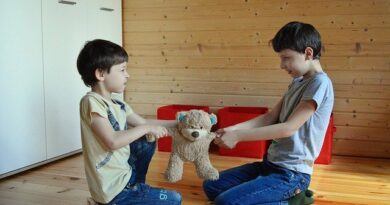The Effects of Discipline on a Child

Physical punishment and psychological punishment are two of the most common forms of child discipline. Non-violent methods such as explaining wrong behavior and taking away privileges are also common, but they are usually used in conjunction with violent techniques. Few children receive only non-violent discipline. Instead, they experience a range of effects. Here are some ways to discipline children without causing harm to your relationship with your child. This article will discuss the benefits and disadvantages of each discipline method.
Physical punishment
Research has shown that the use of physical punishment can negatively impact a child’s development and can even lead to serious consequences later in life. In fact, physical punishment has been linked to increased risk for depression, anxiety disorders, substance abuse, and a variety of other negative outcomes. Researchers at the Children’s Issues Centre have reviewed this research and updated the section on physical punishment. In the following paragraphs, we review the findings of recent studies that show the harmful effects of physical punishment on children.
The use of physical punishment is strongly linked to aggressive and antisocial behaviour, and it may legitimize violence in interpersonal relationships. Children internalise messages and reinforce behaviors they learn from their parents. In other words, parents who use physical punishment may be inadvertently strengthening the aggressive behaviour that is associated with this discipline. This is consistent with the social learning theory, which states that physical punishment can reinforce a child’s aggressive and violent behaviour.
However, while physical punishment may be harmful, other forms of discipline are beneficial for a child’s development. Research on the effects of physical punishment on a child has been robust and is increasingly used in practice. As a result, the WHO has collaborated with partners to develop and implement evidence-based prevention and response strategies. Several INSPIRE strategies contribute to the prevention of physical punishment, including physical abuse. The Global status report on violence against children monitors the progress of countries worldwide on preventing and reducing physical punishment.
Time-outs
If a child is misbehaving, you may want to use time-outs as a means of restraining them. Parents and caregivers should always use the technique consistently and gently, but make sure that the time-outs are not too harsh. Discuss other ways to correct the child’s behavior, such as praise and rewards. This information is not intended to be a substitute for medical advice. Consult your child’s pediatrician to determine the best course of action.
Parents may be wondering if time-outs are a good way to discipline a child. Well, the process of separating a child from the cause of the conflict has been proven effective, but there are many parents who use the technique incorrectly. Time-outs allow a parent to cool off, allowing both the child and parent to regain control. It’s also best to practice the time-out procedures with your child beforehand.
A time-out can last anywhere from two to five minutes. Children should never be allowed to talk, watch TV, or bang furniture. The clock should be set to start over at the beginning of each time-out, and any violation should result in another one. Once you’ve established a time-out, be consistent with the rules. A time-out will also encourage more desirable behavior in your child.
Consistency
A key part of successful parenting is consistent behavior. Consistency involves being firm with the rules and enforcing consequences every time a child violates the rules. Never give in to a child’s pleas for mercy or a second chance. Disciplined kids know that breaking rules means they will not be given another chance. They learn to behave accordingly when they feel they are getting a second chance.
Children learn to respect and trust consistent parents. If parents are inconsistent, children may take advantage of their lack of consistency. Consistency with your own behavior is essential in raising secure and confident children. Consistency is a virtue worth striving for. It isn’t easy, but it will pay off in the end. Here are three ways to be consistent with your child:
Providing a consistent schedule is one of the most important aspects of parenting. Kids respond better to routine. By using consistent rules and routines, children will feel more secure and confident. They know what to expect next and won’t become anxious if they break a rule. Inconsistent parenting leaves children confused and anxious. Instead, focus on the most important behaviors and set firm, consistent boundaries.
Predictability
Children are more likely to respond to changes that are predictable than those that are sudden. Children feel secure when things remain the same and are less likely to worry about the changes that are coming. Therefore, predictable discipline methods help to lower stress levels and increase the child’s self-esteem. Here are a few benefits of predictable discipline methods. Let’s examine each one. If you’re using these methods to discipline your child, make sure to follow these tips.
Children with ADHD need predictable routines and expectations. This consistency promotes predictability, which is helpful for adults with ADHD. Create a daily schedule for your child so they’ll know what to expect. Older children may benefit from charts, timers, and checklists. These visual aids help children internalize the progression and respond more quickly to changes. However, consistency and predictability are not the same for every child.
Consistency and predictability are the cornerstones of discipline. Oftentimes, parents are pushed to choose one method over another. As a result, discipline can feel like a lesson in escalation, with more punishment given when the child breaks a rule. However, children learn just as much from hollow threats as they do from fair consequences. Ultimately, they need predictable consequences in order to learn how to behave in a positive way.
Rewarding
There are many benefits to rewarding your child’s good behavior. Children who receive praise or treats regularly will respond to these rewards more positively than those who do not receive them. Positive reinforcement can also be a form of discipline. Using a reward chart can help you keep track of the positive behaviors your child performs. By praising these actions, you will have a permanent reminder of what they have accomplished. Similarly, praise and rewards for good behavior can help you encourage good behavior.
When implementing a reward system, be sure to choose something that is age-appropriate for your child. This way, your child will feel more motivated to change their behavior. Choose rewards that are attainable, yet still exciting, for a child. Also, be consistent and follow through with your rewards. If you want your child to feel good about their achievements, you should give them specific praise and rewards. Involve them in the process.
In the early years of discipline, you can use a reward strategy to motivate your child. By connecting right behavior with rewards, you are teaching your child the difference between what is right and what is wrong. By establishing a positive association between the two, your child will learn to associate discipline with good behavior and what is right. They will also learn to distinguish right and wrong behaviour and the importance of following rules. However, you must keep in mind that conventional methods of discipline are more effective than gentle parenting.
Developing self-discipline
Developing self-discipline as an after-effect of discipline has many benefits. Having a “why” to live by helps us stay focused and motivated. Self-discipline, which is an essential ingredient in success, can also enhance your spiritual growth and help you meditate. It can also help you develop new skills and enhance your self-image. Discipline can be strengthened through exercise and training. Remember that discipline is not the same as obedience. It is being self-reliant, following your common sense, and sticking to your plan.
To develop self-discipline, set a short-term goal and work up to it gradually. Make sure you do not set too high a goal at the start. Instead, set small, achievable goals and gradually increase the difficulty of the goal. You can begin by choosing one small goal and focusing on that for a day or two. If you want to improve your cooking skills, for instance, you can choose a specific food item and prepare it with a recipe you can find at the grocery store. Once you’ve mastered this habit, you can go on to the next level.
Developing self-discipline as an after-effect of discipline involves making decisions every day. During those times, you’ll need to decide whether you’ll give in to temptation or resist it. Don’t go grocery shopping on an empty stomach, because this way you’ll be tempted to pick up unhealthy or high-calorie foods. Having self-discipline in this way will allow you to overcome temptations and be more productive.




